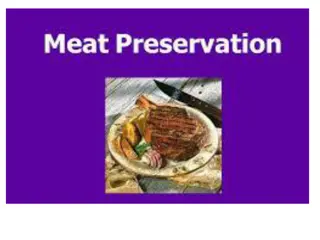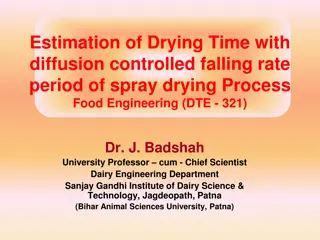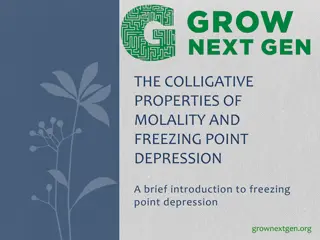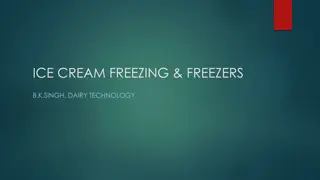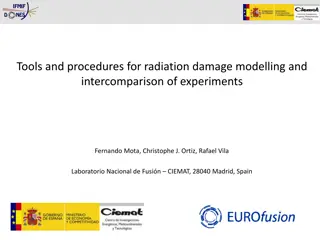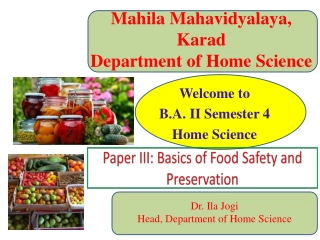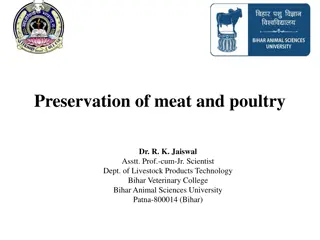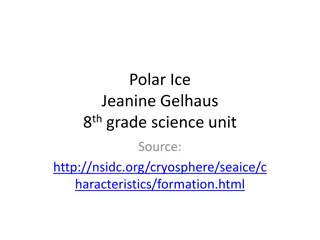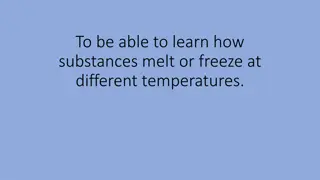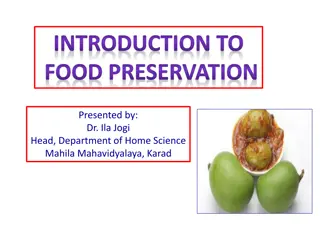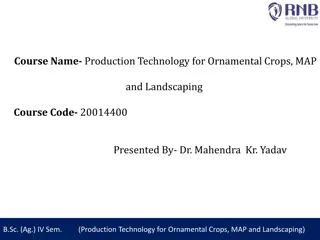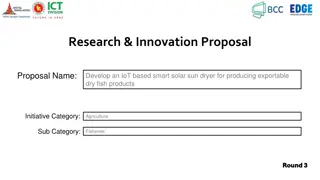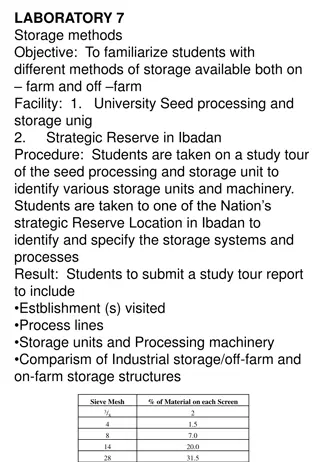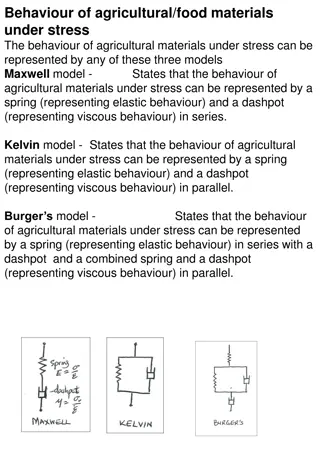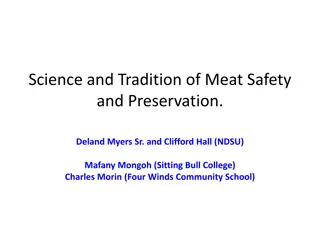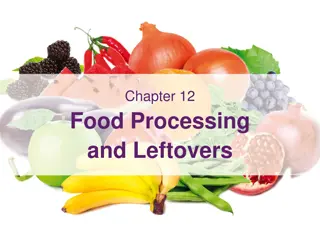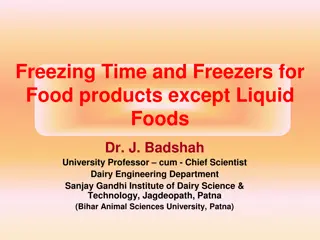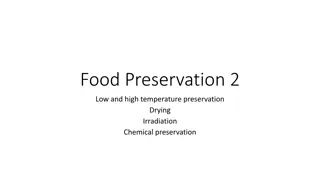Food Preservation Technologies: Freezing, Freeze-Drying, and Irradiation
Explore the various methods of food preservation such as freezing, freeze-drying, and irradiation. Learn how freezing slows enzyme action and prevents microbial growth, while freeze-drying preserves food by removing moisture through sublimation. Discover how irradiation destroys spoilage organisms to extend food shelf life. Dive into the processes, benefits, and considerations of these preservation techniques.
Uploaded on Oct 05, 2024 | 0 Views
Download Presentation

Please find below an Image/Link to download the presentation.
The content on the website is provided AS IS for your information and personal use only. It may not be sold, licensed, or shared on other websites without obtaining consent from the author. Download presentation by click this link. If you encounter any issues during the download, it is possible that the publisher has removed the file from their server.
E N D
Presentation Transcript
Food Preservation Technology Ch. 28
Objectives: Describe the effect of freezing on foods Identify and describe commercial freezing methods Demonstrate how to choose and package foods for freezing at home Explain the role of sublimation in freeze-drying Explain how irradiation preserves foods Assess arguments for and against irradiation Evaluate the suitability of containers for commercial food packaging Compare modified-atmosphere packaging with aseptic packaging Vocabulary: Electromagnetic spectrum Electromagnetic waves Flash frozen Gray Immersion freezing Indirect-contact freezing Irradiation Kilogray (kGy) Lyophilization Modified-atmosphere packaging (MAP) Radiation
Freezing Preserves food by slowing the action of enzymes Prevents the growth of microorganisms Freezer burn- caused by poor packaging Commercial freezing includes: Freezing in air: most common method Indirect-contact freezing: food chills next to cold wall Immersion freezing: food submerged in refrigerant
Freezing example Home freezing Foods with high water content lose shape when frozen (fruits and vegetables) Seasonings such as basil turn bitter in the freezer Typical frozen foods last 6-12 months in freezer
Freeze-drying Commercial process that combines freezing and drying to preserve food Technical name: Lyophilization Sublimation- ice changes from solid to gas, leaving dried food Flash freeze- frozen very quickly
Freeze-drying example Used with mushrooms, strawberries, chicken Can be stored for months or years Freeze dried products are lightweight Food reconstituted before it s eaten
Irradiation Food is exposed to a controlled amount of radiation for a specific time Destroys organisms that would cause spoilage Amount of radiation measured in grays More radiation, the greater the preservative effect
Irradiation example Potatoes and onions have been treated to inhibit sprouting Irradiated mushrooms have less deterioration Gives food a longer shelf life Poultry and beef has decreased E. coli
Packaging Safety- nontoxic, sanitary, sturdy Food quality- protect food from light/odors Convenience- opened easily, resealable Expense- lower cost Environmentally safe- recyclable Marketing appeal- attractive to consumers
Packaging example Modified-atmosphere packaging (MAP)- creates gaseous environment for food Aseptic packaging- store beverages/liquid foods that were aseptically processed Edible films/wraps- natural biodegradable film for example apple skin
Conclusion video (3:14 minutes) http://youtu.be/r-aP9wEeCr0


